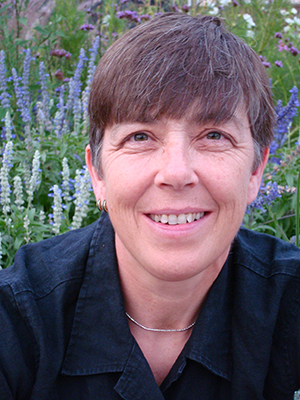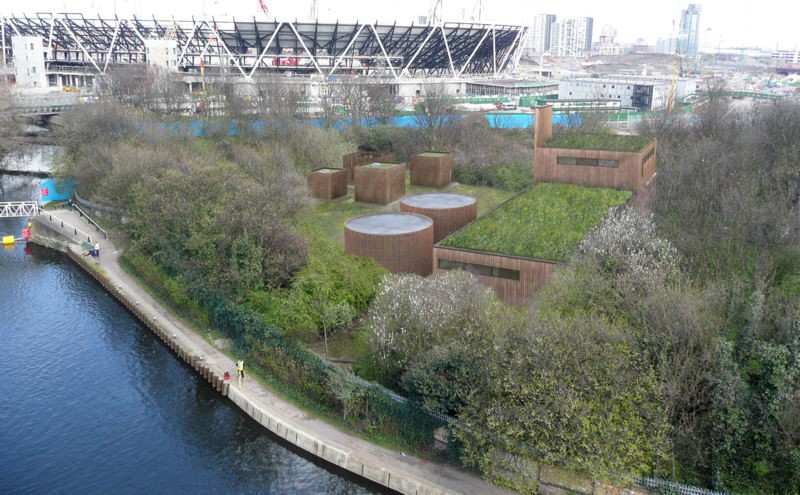
Whats in a Word?
Posted on: March 2018Cath Hassell www.ech2o.co.uk
 |
Cath Hassell is an expert in sustainable water strategies and low-carbon technologies, formed from a background of 17 years in the plumbing industry and 16 years in environmental building. She is director of ech2o consultants ltd, a company that works at both a strategic and individual site level, providing technological and behavioural solutions that reduce the UK’s carbon footprint. Cath is a founder member of SWIG (the Sustainable Water Industry Group) and was a director of the AECB for seven years. Fascinated by how we use water she writes a regular column for Green Building Magazine, a water blog for the AECB and blogs about showering at a year of showering variously. She talks to a wide range of audiences across the UK about environmental issues. www.ech2o.co.uk |
What do you see if you look at water that has just entered a drain or sewer? Well, if it’s just come from a toilet that’s been flushed (known as foul water) it will look like water (i.e. clear). It might have loo roll in it (possibly variable colours though mostly white) or poo, and if the user hasn’t heard of the three P’s rule (i.e. only poo paper or pee) then maybe a wet-wipe, a tampon, or an earbud or two. Does it look black? No! So why do architects and engineers, if it’s going to be treated on site persist in calling the process blackwater recycling? Well, maybe it looks black once it’s floated along the sewers for a while and the poo has started to decompose and it’s arrived at the sewage treatment plant? Well, it’s true it doesn’t look clear any more; it often looks brown and sludgy, but it categorically doesn’t look black.
 |
So, where has that term come from and does it even matter? Well I would argue it does matter. A lot. Language is important (as Sarah Bell’s blogged about recently). It is one of the things that define us as human. And language changes all the time. This is certainly true within the environmental building industry over the last fifteen to twenty years as new systems, processes and products are introduced and new words start to become common currency. I first questioned the use of this term in an article in Green Building Magazine back in 2011, when the term ‘blackwater’ was still relatively rare. In the intervening six years the use of it has become rampant. So why does no-one take a step back and ask why are we using this term when it does not describe the appearance of the water? |
When I first heard the term ‘greywater’ used for wastewater (back in 1997) I naively assumed it to be a reference to the appearance of the water due to the effect of scum formation, and the colour wastewater becomes after it begins to biologically decompose. But then I started to hear the term ‘blackwater’ to describe water from toilets, which we have already established doesn’t describe the appearance of the water at all. And, from about 2008 onwards in the UK, the term ‘blackwater treatment’ started being used to describe the on-site treatment of sewage in an eco-town or on an eco-development, where the effluent is used back in the development for certain non-potable purposes. Which, is ironic in that the term isn’t even used correctly as ‘blackwater’ treatment plants deal with both foul and waste water, so ‘blackwater’ and ‘greywater’ in their terms.
Why? Why did the environmental building movement think they needed this new term and anyway, where had it come from? So I did some research and the first reference I could find to it was in a US patent applied for in 1974 where water was divided into ‘white’ water (waste water) and ‘black’ water (sewage from the building)(1), a perfect example of using the term black to describe something that has negative connotations, rather than an actual description (such as blackboard).
Sewage treatment for direct re-use
So what term am I suggesting is used instead? Well, why not sewage treatment? this is a term that has been used in the UK since the middle of the 19th Century and is the treatment of sewage which is itself defined as: waste water and excrement conveyed in sewers (2). Usually sewage treatment is an end of pipe solution with the clean water being discharged into a river or the sea. What we are actually talking about here is a slightly different process to normal sewage treatment in so far as the sewage effluent is treated beyond normal secondary and tertiary treatment, the effluent may meet drinking water standards and it is re-used to replace mains water. However, the technology is not new, is not confined to just “eco†developments, and has a technical term that describes it perfectly, which is sewage treatment for direct re-use. In the US, home of the term ‘blackwater’, such treatment and distribution schemes, of which there are an increasing number, are now being referred to as simply ‘water re-use’ systems.(3)
So, to recap, sewage treatment for direct re-use is the planned and deliberate use of treated sewage. At its most extreme, the sewage effluent is cleaned to potable water standard and injected directly into the mains supplying a town or city. However at present, mainly due to the so-called ‘yuck’ factor, most direct re-use systems clean the sewage effluent so that it is considered fit for purpose for irrigation, WC flushing and urinal flushing, and supply a secondary network of distribution pipework for this water as well as a mains supply network. In the UK the most high profile example of a sewage treatment plant with direct re-use is on the London Olympic site - Old Ford Water Recycling Plant.
 |
And, finally, if you think this blog is unnecessary, I would just ask, what would you say if you were talking about ‘blackwater’ treatment to a group of adolescents in the diverse Britain of today who understand the power of language and asked you why is it called ‘blackwater’ if it’s not black? It is sewage treatment with direct re-use for non-potable purposes. It is a highly technical solution; let’s call it by its correct technical name.
(1) Chad Staddon has written a great WATEF blog about water re-use systems recently without mentioning the term blackwater once.
(4) https://theukwaterpartnership.org/thames-water-old-ford-water-recycling-plant/
Your Comments: please click on this link to comment on our WATEF Blog Network Forum (note: WATEF network members only; to become a WATEF network member please click here - its' free to join!)



